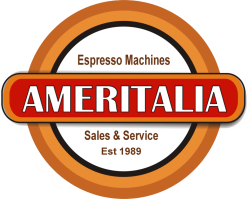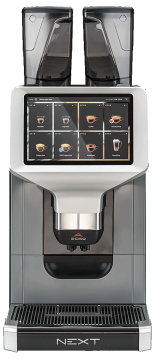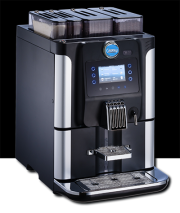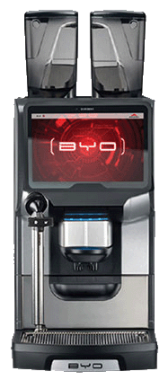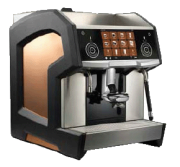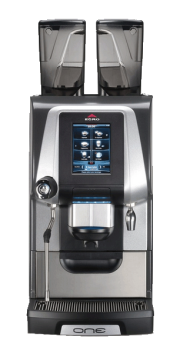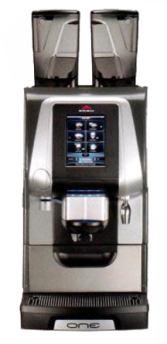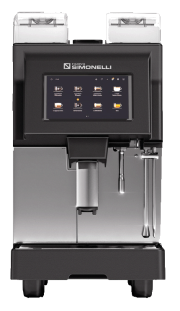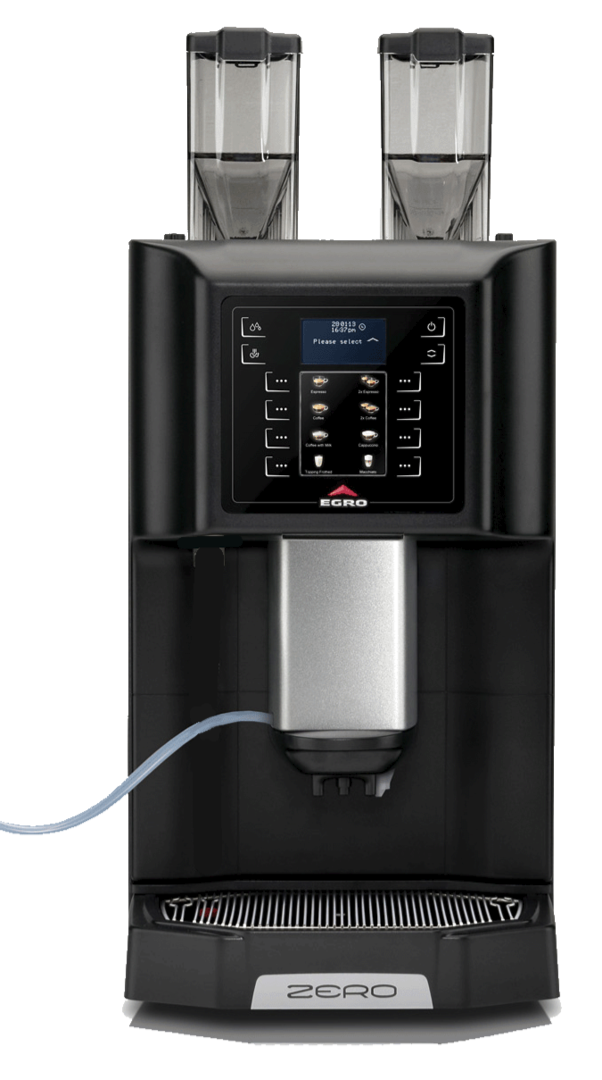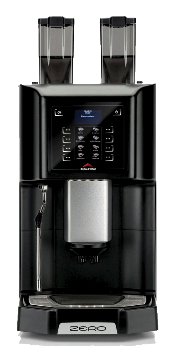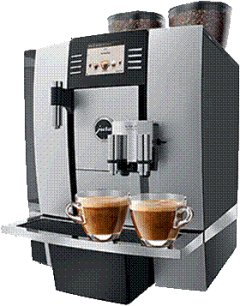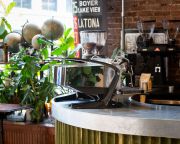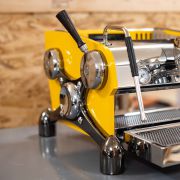
Blog
Recent Posts
All Posts
MILAN – Is coffee acidic? A short review from Healthline tries to establish whether this beverage is acidic and how its acidity may impact their health. In general, acidity is determined using the pH scale, which specifies how basic or acidic a water based solution is.
The scale ranges from 0 to 14. Any solution registering from 0 to 7 on the scale is considered acidic, whereas a solution registering from 7 to 14 is considered basic.
Most coffee varieties are acidic, with an average pH value of 4.85 to 5.10.
Among the countless compounds in this beverage, the brewing process releases nine major acids that contribute to its unique flavor profile.
Here are the nine major acids in coffee, listed from highest concentration to lowest: chlorogenic, quinic, citric, acetic, lactic, malic, phosphoric, linoleic, and palmitic.
The brewing process releases acids from coffee beans, giving this beverage a pH of 4.85 to 5.10, which is considered acidic.
Variations in acidity
When it comes to the acidity of coffee, several factors can play a role.
Roasting
One main aspect that determines the acidity of coffee is how it’s roasted. Both roasting duration and temperature have been correlated with acidity.
One study showed that the longer and hotter coffee beans were roasted, the lower their chlorogenic acid levels.
This suggests that lighter roasts tend to be higher in acidity, while darker roasts are lower.
Brewing
Another factor that affects acidity is the brewing method.
One study found that cold-brewed coffee was significantly lower in acidity than hot coffee.
Brewing time also appears to affect overall acidity, with a shorter duration resulting in a more acidic beverage and a moderate duration resulting in a less acidic one.
Ground size
The size of the coffee grounds can also affect acidity. The smaller the ground, the greater the surface area exposed relative to volume, which can lead to more acid being extracted in the brewing process.
Therefore, using a finer grind may result in a more acidic cup of coffee.
Several factors contribute to coffee’s acidity. The main ones are the roasting duration, brewing method, and fineness of the grind.
Possible effects on health
While coffee’s acidity is fine for most people, it may aggravate certain health conditions in others.
These conditions include acid reflux, gastric ulcers, and irritable bowel syndrome (IBS). Coffee’s effects on these conditions are mainly attributed to its acidity and slight laxative effect in some people.
Coffee has not been shown to cause these conditions. However, if you have been diagnosed with one of them, it’s often recommended to avoid coffee.
Alternatively, some people may benefit from simply opting for less acidic varieties. Ways to reduce acidity
The acidity of coffee may be limiting for some. Here are a few ways to reduce it: Choose dark over light roasts.
Drink cold brew instead of hot. Increase brew time, such as by using a French press. Opt for a coarser grind.
Brew at a lower temperature.
Summary
Because coffee is acidic, it may impact certain health conditions, such as acid reflux and IBS. Thus, some people may have to avoid it. Although the acidity of this beverage cannot be eliminated, there are several ways to reduce it.
With an average pH of 4.85 to 5.10, most coffees are considered rather acidic.
While this doesn’t present a problem for most coffee lovers, the acidity can negatively affect certain health conditions in some people, such as acid reflux and IBS.
There are several methods of reducing acidity, such as drinking cold brew coffee and choosing darker roasts. Using these strategies, you can enjoy your cup of java while reducing the side effects of its acidity.
Comments
-
This is an entirely decent blog with a lot of cool data. I happened to visit your blog while I am looking for Gaggia Classic Pro, much obliged for your bits of knowledge on the processor.
Btw, one speedy inquiry, have you actually make a coffee with espresso pounded by extravagant handmill, for example, comandante? Hypothetically, the outcome would be same as tapered burr processor.
Hi Katie, I have not tried making coffee as you suggest. It all starts with good beans. Espresso blends are usually a combination of different varieties and roasts then blended together. If you look at a bag of espresso beans you should see different shades of roast and bean size.
This will give you a good idea of the quality and attention the roaster gives to his product. Most lower priced beans are all one size and one roast. Burr grinders do the beans a favor as they are more controled with various settings. Pounding your beans will not give you uniformity, you will wind up with some real fine particles and some not so fine. The process of making coffee is to wash (extract) the oils from the beans, the finer the grind the more tannins you extract, the hotter the water the more tannins you will extract making the end product a little bitter. Whatever recipe or formula you use the things to remember are: good water, good quality coffee beans, the right temperature and a measured extraction time. There are many ways to accomplish this, it is really up to the persons personal taste etc. Thank you for your input.
Al
WHY DO WE GRIND COFFEE?
There are quite a few factors which influence the taste of our coffee. Starting from the raw material to the roasting procedure and the final extraction. In this last and very important step, one of the most difficult decision and action to take is: the grind size!
Unfortunately, this very important element of coffee extraction is still ignored by many baristas or coffee shop owners, who often rely on technical assistance companies to do this job for them.
But knowing and owning your coffee grind is the best way to daily check your coffee extraction and make sure that it’s at its best. Also, it will probably save you money and time!
Let’s start from the basics thanks to some very useful and important notions that we took from our partner Il caffe, one of Italy’s most known coffee blogs!
WHY DO WE GRIND COFFEE?i
- The aromatic substances that develop inside a coffee bean during roasting are trapped in their cellular structure. By breaking the bean, we can free the aromas and bring them into our extraction.
- By grinding, we increase the surface of coffee, which is in contact with water, facilitating the extraction of aromatic substances. In fact, the finer the grind, the more coffee surface will be exposed to the extraction.
HOW DOES A COFFEE GRINDER WORK?
The coffee grinder is a very important piece of equipment of a coffee shop. It’s often even more important than the espresso machine.
Thanks to metal grinders (flat or conical), it
allows you to cut the coffee bean into small particles. By adjusting the grind size, the distance between the grinders increases or decreases.
In fact, by bringing them closer, we will obtain a finer grain size. Instead, by moving them further apart the grain size will be larger.
Each coffee grinder manufacturer has their own system of adjusting the distance of the grinders manually or electronically.
Larger circles and higher numbers usually correspond to larger grain sizes. Various models feature arrows with Fine-Coarse indications to facilitate the barista in setting the grind.
he coffee grinder is a very important piece of equipment of a coffee shop. It’s often even more important than the espresso machine.
THE RECIPE FOR OUR ESPRESSO
Before starting to set up our coffee grinder, it is essential to have a clear understanding of the espresso recipe that we want to serve our customers. Also, we need to have a fundamental tool for the correct grinding adjustment at hand: the scale.
Let’s start with the dose of ground coffee we want to use. Usually the porta-filters that are mounted on espresso machines in Italy, can contain about 7 / 8 gr of coffee (14 / 16gr in the double filter).
If you want to use higher doses, we will have to use larger filters, but we recommend to not go below the minimum recommended quantity for your espresso.
From this dose of coffee, we will extract a 25ml of coffee in a time of 22 “/ 28” seconds.
This does not ensure that we have extracted the best possible espresso with our coffee yet, but at least these are the correct parameters to make sure we have a balanced drink in the cup.
In fact, with shorter contact times, we will have an under-extracted espresso with a very light crema that will tend to open very quickly, with a very low body and aroma. On the other hand, with a longer contact time, it is very likely that the water will extract unwanted substances in our espresso with bitter and astringent sensations, typical for over-extracted coffee.
Portafilter with freshly ground morning coffee on the scales
WEIGH AND TIME YOUR ESPRESSO EVERY MORNING
In our barista courses at Espresso Academy, we recommend using the scale to weigh the espresso in the cup during extraction. This allows you to be much more precise on the exact extracted amount.
Also, a timer can be very useful (if your espresso machine is a bit more traditional and doesn’t have one!)
During normal working hours of a coffee shop it is difficult to weigh each extraction, but if we use the right parameters when we set the volumetric counters on our machine each morning, we will make sure to have the right extraction throughout the day.
The volumetric parameters of the machine can be accurate if the coffee dose remains unchanged, but small changes in dosage will also influence your cup. This is due to the absorption of water by the ground coffee. In fact, more coffee = less espresso in the cup and vice versa.
How to grind coffee beans for espresso
FINDING THE RIGHT GRIND SIZE
It is advisable to adjust the grind using the double espresso filter holder. In the morning, before you start making the first coffees, we recommend to grind a dose of 14/16 grams of coffee.
Dose it inside the filter holder until you
reach the desired weight and try an extraction.
If this espresso extraction takes place in less than 22 seconds (under extracted espresso) we will have to adjust the grind to “finer” in order to slow down the extraction time. We herewith increase
the contact time between water and ground coffee and allow the water to extract all the positive substances from our coffee.
If on the other hand, the extraction of the espresso takes place in more than 28 seconds (over-extracted espresso) we will have to adjust the grind settings to “larger” in order to speed up the extraction time. We therefore decrease the contact time between the water and ground coffee avoiding that the water extracts negative substances from our coffee.
Before changing the grind size, we should also always empty the grinder of any coffee residues. For this reason, during the settings, we recommend to grind only what is necessary for one dose.
We recommend to adjust the grinding every time we realize that our extractions no longer fall within the parameters of our recipe, which happens regularly during the day due to many variables that affect the roasted coffee. Not only the humidity of the air, but also the degassing time of the coffee in the hopper and the heating of the grinders at peak moments, can be variables which will influence the grinding and therefore your espresso extraction.
Next with Android Tablet
TopMilk $28,690.00
Carimali BlueDot
Prices will vary due to the many different configurations available
NEXT from Rancilio
$23,275.00
Eversys Cameo
$19,350 to $21,500
Egro One Touch Pure Coffee
$21,100.00
Egro One Top Milk XP $27,000.00
Simonelli ProntoBar Touch $14,750.00
Rancilio Egro Zero Quick Milk
$14,000.00
Rancilio Egro Zero Pure Coffee
$12,200.00
Jura Giga X8 Professional $8,995.00
Water Connect Kits are Available,
see Water Connect Fill KIts in page selections left column
Custom made for each client
